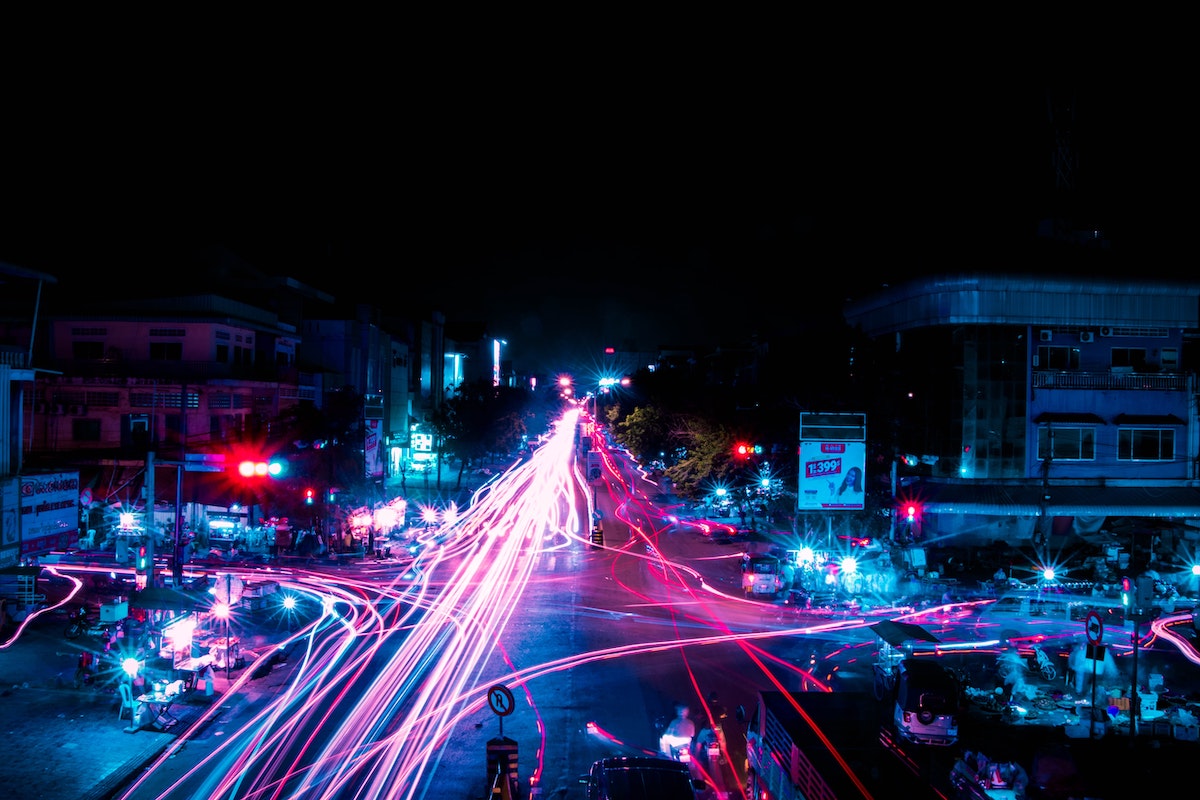
Three Oases of Calm in Hectic Phnom Penh
Skip to Section
Compared to other Asian capital cities, Phnom Penh, with two-and-a-quarter million people, is small and relaxed. But to a first-time visitor the capital of Cambodia seems like a hectic place.
Phnom Penh is a mix of new and old, growing and stagnating. The architecture is a blend of French Colonial, some modern urban buildings, and the corrugated steel typical of the developing world. Riverside District, where my guesthouse was, looked like New Orleans, with ornate cast iron rails on balconies overhanging the sidewalks.
The streets below were alive with cart vendors shouting offers, motorcycle tuk-tuks, mini-buses, delivery trucks, and scooters. The scooters are constant, passing each other tooting their horns, gunning their little engines, some overburdened with masses of cargo or families of four casually hanging on.
When I first arrived, I found the constant flow of traffic and people along the streets wore me down. There seemed to be no escape—even in my hotel room with the blinds shut and the air conditioner cranked up to muffle the street noise, I could sense the surging energy just outside. I learned that the afternoon heat is no time to be roaming the streets; it’s the ideal time to find your urban oasis of calm to wait out the cooler hours.
The Riverside District is home to the Royal Palace, the Silver Pagoda Temple, and the popular riverfront walkway and road. The surrounding area is lined with tourist restaurants, bars, shops, and guesthouses. The sidewalks and streets have the additional pedestrian traffic of thousands of tourists. There was enough movement and commotion to give me anxieties. I set out to find some tranquility.
The Silver Pagoda, named for the thousands of silver floor tiles, is a complex of temples, shrines, and statues where you can escape the city’s noise and hustle. Fanned by breezes from the nearby river, with shady trees and pavilions, it’s a good place to pass the hot afternoon hours.
At the Silver Pagoda Buddhist temple you can talk with the young monks who attend to the shrines and solicit donations to maintain the site and support themselves. On my trip they were happy to discuss their beliefs and vocation, which for many lasts only one year; for others it lasts from childhood to early adulthood, or a lifetime.
Check out the scale model of Angkor Wat in the eastern side of the courtyard, the murals along the north wall, the ancient texts in the Mondap library, and Buddha’s footprints in the Keong Preah Bath houses.
Another oasis is the National Museum. It’s a showplace for Angkor Wat, a perfect introduction and the best place to learn about the meaning of Khmer symbols. The museum is a treasury of iconic statuary; all the artifacts are the best representatives of gods and idols from Angkor Wat, along with other more ancient artifacts.
My favorite was a pair of wrestling Hanumans, five feet tall carved from granite. The monkey god is sometimes worshiped to get rid of demons, and in this statue he fights himself. The piece exemplifies the influence from the Indian Hindu culture found in the ancient Khmer Empire.
The museum’s interior courtyard garden with ponds and pagodas is another cool and tranquil place to spend the hot mid-afternoon. Stone statues, including an impressive Yama, God of Death, surround the gardens. The museum is set well back from the street noise and the garden is an enlightening retreat from the city.
Another escape is Raffles Hotel. This grand old colonial-style building is set back from the road by a broad, well-manicured front lawn. The ornate hotel was opened in 1929, and has been the nation’s most prestigious accommodation for foreign leaders, famous artists, and big business people. Raffles was a favorite of Jacqueline Kennedy’s (she loved the Elephant Bar) and resident author Andre Malraux (Man’s Fate).
The enclosed courtyard gardens are a shady oasis of tranquility from the busy city. The swimming pool at Raffles Hotel is huge. Slipping in as an unpaid guest to enjoy this exclusive French Colonial era hotel is easy for a well-groomed foreigner. Raffles Hotel is located near Wat Phnom. At a couple of kilometers distance from the Riverside District, it’s just a short tuk-tuk ride away.
About the Author
Born in The Hague, Andrew Kolasinski arrived in Canada as a small child riding in the luggage rack of a DC-7. Since then he has felt at home anywhere. As the publisher and editor of Island Angler, Andrew spends half the year fishing for salmon and trout, and in the off-season he travels the world looking for a story. This article was written on behalf of Tucan Travel, providers of tours to Cambodia and throughout Southeast Asia.
Featured image via Unsplash.
Information published on this website and across our networks can change over time. Stories and recommendations reflect the subjective opinions of our writers. You should consult multiple sources to ensure you have the most current, safe, and correct details for your own research and plans.
Frayed Passport is a participant in the Amazon Associates Program, an affiliate advertising program designed to provide a means for sites to earn advertising fees by advertising and linking to Amazon.com. We also may share links to other affiliates and sponsors in articles across our website.




